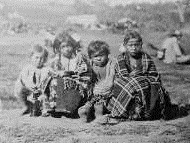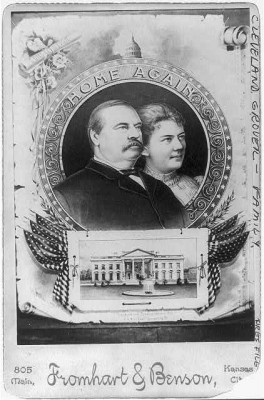A Thanksgiving Story
During our South Dakota adventure in October, we made a visit to the world’s only Corn Palace in Mitchell. Here is one of this year’s many amazing corn pictures at the Corn Palace, an appropriate image for us since we had just left the Shrine of Democracy that morning and seen the wildlife of Custer State Park the day before.

We have visited the Corn Palace each time we have been to South Dakota, but this is the first time I have looked into its history. I plan to show you more photos of this year’s Corn Palace tomorrow, but first I want to tell you about the first corn palace, built in Sioux City, Iowa, in 1887.
In the 1870s, Midwestern farmers experienced great grasshopper plagues. Those of you who have read On the Banks of Plum Creek will remember how those plagues devastated the finances of the Ingalls family.
Catholic priest Pierre Boucher, who lived near Sioux City, Iowa, was concerned about the devastation. In May of 1876, Boucher decided to seek God’s help. First, he and his parishioners erected huge wooden crosses representing the Stations of the Cross, along an eleven-mile route. Then, they marched along the route, worshiping God at each cross. The following morning the grasshoppers in their area were gone.
While farmers in the Midwest continued to suffer drought and poor yields for several decades, the area around Sioux City experienced bumper crops. Sioux City came to be known as “a green spot in a field of brown.”¹
Residents of Sioux City decided to hold a festival of thanksgiving. At first workmen planned to cover the local county courthouse with corn, but as more and more people got excited about the project, planners decided to build an 18,000 square foot structure. Farmers from the surrounding area sent large donations of corn to Sioux City.
The finished palace had “a huge cupola, arched windows, minarets and pinnacles. At each of the front corners was a square tower representing Dakota, Nebraska, and Minnesota. Connecting the main tower to each of the corner towers were ‘long flying buttresses which swept gracefully down’ to the lower structures. The windows were framed with ears of corn strung on wires, and the roof was thatched with stalks of grain. Arched entrances opened onto both Jackson and Fifth Streets. Above each doorway was an agricultural scene depicted in corn.”²
For one week, Sioux City celebrated their Corn Palace Festival with concerts, dances, fireworks, parades, and speeches. Approximately 200 Omaha, Sioux, and Winnebago Indians marched in one parade. Participants competed for prizes for best country display, best band, and best representation of frontier life.


Attendance was estimated at 130,000 people, including Cornelius Vanderbilt. Local railroads added additional passenger cars to bring in visitors. The New York Times, the London Times and several magazines wrote stories about the event.
President Grover Cleveland and his wife were in Omaha, Nebraska, while the festival was going on, but on the day after it closed, he arrived by special train to see the Corn Palace. The New York Times reported that “a more entertaining array of novelties has not met the gaze of the President since his trip began.”³

Sioux City continued to erect corn palaces through 1891. The idea spread to other places in Iowa. During the 1880s and 1890s, Iowans built a blue grass palace, a flax palace, a hay palace, and even a coal palace! One community even thought about erecting an onion palace.
Every good gift does indeed come from God. It is indeed good to give thanks to the Lord. God does indeed hear our cries for help. In this week of Thanksgiving, we can pray this prayer from the heart of King David.
Let our sons in their youth
be as grown-up plants,
And our daughters as corner pillars
fashioned as for a palace;
Let our garners be full,
furnishing every kind of produce,
And our flocks bring forth thousands
and ten thousands in our fields;
Let our cattle bear
Without mishap and without loss,
Let there be no outcry in our streets!
How blessed are the people
who are so situated;
How blessed are the people
whose God is the Lord!
Psalm 144:12-15
A personal note: Before I did the research for this post, all I knew about the Sioux City Corn Palace was that it had preceded the one in Mitchell. I certainly had never heard about Boucher and his prayers. The story is amazing on its own, but is of particular interest to me because I have Boucher ancestors on my daddy’s side. My Boucher ancestors were French Canadians in the 1600s. Wouldn’t that be amazing if we are very distant cousins!
¹ Schwieder, Dorothy; and Swanson, Patricia. “The Sioux City Corn Palaces.” The Annals of Iowa 41 (1773), 1209-1227. Available at: http://ir.uiowa.edu/annals-of-iowa/vol41/iss8/2
² John Ely Briggs, “The Sioux City Corn Palaces,” The Palimpsest, III No. 10 (1922), 316-317, as quoted in the article above.
³ Schwieder and Swanson, op. cit.

